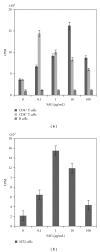Use of antimony in the treatment of leishmaniasis: current status and future directions
- PMID: 22091408
- PMCID: PMC3196053
- DOI: 10.4061/2011/571242
Use of antimony in the treatment of leishmaniasis: current status and future directions
Abstract
In the recent past the standard treatment of kala-azar involved the use of pentavalent antimonials Sb(V). Because of progressive rise in treatment failure to Sb(V) was limited its use in the treatment program in the Indian subcontinent. Until now the mechanism of action of Sb(V) is not very clear. Recent studies indicated that both parasite and hosts contribute to the antimony efflux mechanism. Interestingly, antimonials show strong immunostimulatory abilities as evident from the upregulation of transplantation antigens and enhanced T cell stimulating ability of normal antigen presenting cells when treated with Sb(V) in vitro. Recently, it has been shown that some of the peroxovanadium compounds have Sb(V)-resistance modifying ability in experimental infection with Sb(V) resistant Leishmania donovani isolates in murine model. Thus, vanadium compounds may be used in combination with Sb(V) in the treatment of Sb(V) resistance cases of kala-azar.
Figures




References
-
- Lira R, Sundar S, Makharia A, et al. Evidence that the high incidence of treatment failures in Indian kala-azar is due to the emergence of antimony-resistant strains of Leishmania donovani . Journal of Infectious Diseases. 1999;180(2):564–567. - PubMed
-
- Sundar S. Drug resistance in Indian visceral leishmaniasis. Tropical Medicine and International Health. 2001;6(11):849–854. - PubMed
-
- Mishra M, Biswas UK, Jha DN, Khan AB. Amphotericin versus pentamidine in antimony-unresponsive kala-azar. The Lancet. 1992;340(8830):1256–1257. - PubMed
LinkOut - more resources
Full Text Sources
Other Literature Sources
Miscellaneous
